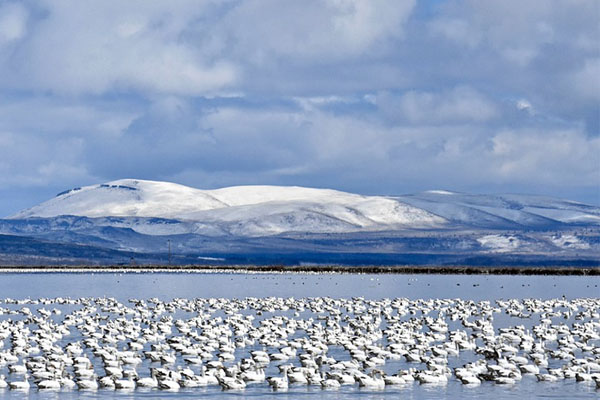Travel Pages
RomWell Travel Advisory
Snow Goose Hunting Tips
Begin by driving back roads to locate fields where snow geese are feeding. Scouting the fields for where the geese want to be is the key to success. Find the landowner and always get permission to hunt before anything else. If the decoys can be set by mid-afternoon, you can hunt the field that evening and again the next morning.
Snow geese usually return to a field until the food is exhausted. However, they have good memories and won't return to a place where they have been shot at. Finding a hot field and setting out decoys may result in two or three successful hunts; an evening, morning and possibly another evening. After that, the birds are gone and its back to scouting.
Hide all signs of human activity, including tire tracks, candy wrappers and any other non-natural items.
Park vehicles at least a half mile away.
Set out a minimum of 500 decoys (1,000 to 1,500 is better).
Supplement shell and silhouette decoys with lighter, less expensive white rags or white plastic bag decoys.
Wear camouflage or white if snow covers the ground.
Don't over call. Calls are most useful for calling in single birds or isolated pairs.
Don't begin shooting while birds are still landing. For maximum shooting opportunity, wait until birds already on the ground begin to get nervous and take flight.
Hunting partners should agree on fields of fire so shooting opportunities are not wasted by shooting at the same bird.
Take your first shots at birds that are at the fringe of your effective range, then work your way back through closer birds.
Focus on one bird at a time.
A morning's shooting ends when the birds go back to roost in refuge areas during the middle of the day. Sometimes that is as early as 9 a.m., other times they may not roost until noon. Afternoon feeding flights can arrive two hours before dark, but they may not appear until shooting hours are almost over.
2¾-inch shotgun shells with No. 1 or No. 2 steel shot work well for snow geese.
Snow geese are fast learners and quickly become wary when hunted. They are long-lived and travel in large flocks, so thousands of experienced eyes examine every potential feeding and resting place for danger before landing. Furthermore, their nomadic lifestyle makes them difficult to locate.
Hunting snow geese requires hard work and specialized strategies, but those who learn the tricks find it immensely rewarding. Several hunters claim that few outdoor experiences can compare with being at the center of a swirling-vortex of several thousand squawking snow geese settling into a decoy spread.
Article Source: Ducks Unlimited Inc.
Ducks Unlimited conserves, restores and manages wetlands and associated habitats for North America's waterfowl. These habitats also benefit other wildlife and people. Visit their web site at www.ducks.org to learn more, support their mission or to find more info.




